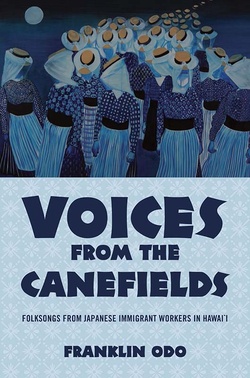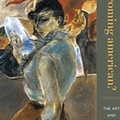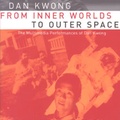Folk songs are short stories from the souls of common people. Some, like Mexican corridos or Scottish ballads, reworked in the Appalachias, are stories of tragic or heroic episodes. Others, like the African American blues, reach from a difficult present back into slavery and forward into a troubled future.
Japanese workers on Hawaii’s plantations created their own versions, in form more akin to their traditional tanka or haiku poetry. These holehole bushi describe the experiences of one particular group caught in the global movements of capital, empire, and labor during the late nineteenth and early twentieth centuries.
In his latest book, Voices from the Canefields: Folksongs from Japanese Immigrant Workers in Hawaii, Dr. Franklin Odo translated over 200 lyrics of folk songs, “wonderful and evocative illustrations of labor, love, and lust for this generation!” Engagingly written and drawing on a multitude of sources, including family histories, newspapers, oral histories, the expressed perspectives of women in this immigrant society, and accounts from the prolific Japanese language press into the narrative, Voices from the Canefields will speak not only to scholars of ethnomusicology, migration history, and ethnic/racial movements, but also to a general audience of Japanese Americans seeking connections to their cultural past and the experiences of their most recently past generations.
The book also describes a relationship developed between Dr. Odo and Harry Minoru Urata, a music teacher who had been interned in Honouliuli Camp, outside of Honolulu, during World War II. According to Dr. Odo, Mr. Urata was encouraged to collect the holehole bushi folk songs which the Issei sugar workers often sang. Urata subsequently interviewed and tape-recorded about 30 Issei in the 1960s and 1970s. In the 1980s, Mr. Urata gave Dr. Odo the tapes and asked him to write this book.
Franklin Odo was founding director of the Smithsonian Institution’s Asian Pacific American Program and Acting Chief of the Asian Division at the Library of Congress. He was among the pioneering faculty involved in Asian American Studies at UCLA and taught Asian American history at the University of Hawai`i, UPenn, Hunter, Princeton, and Columbia. The Japanese American National Museum is honored to welcome Dr. Odo to the museum on Sunday, October 13, 2013, for its public program. We recently caught up with Dr. Odo, to discuss his work, life, views, and upcoming publication.
* * *
JANM: You are a respected scholar and pioneer for Asian Americans Studies. Can you tell me about your personal background, and what inspired you down this path? Was it your early education, home life, political activism, etc.?
Dr. Odo: Growing up in Hawai`i was not necessarily the best incubating ground for radical activism, although there were quite a few of us throughout the ages who elected to go that route, even though pressure to conform to “local” and fairly conservative values were fairly strong. I thought I was assimilating successfully [whatever that means] through undergraduate work at Princeton, and graduate work at Harvard, Stanford, and Princeton.
But, after my marriage to Enid Reid Odo in 1964 and several children, I was confronted with very new circumstances in 1968, when I began teaching at Occidental College in Los Angeles. There, we were increasingly enmeshed in anti-war and civil rights struggles and participated in many marches and a few building occupations and hunger strikes. Enid had been a Freedom Rider in 1962, and I had encountered enough racist challenges throughout my life to understand, by then, that issues raised by the war in Southeast Asia and the movements for racial justice, including Malcolm X, the Panthers, and Ethnic Studies, were integral to my life. So I “defected” from my long decade of training in Japanese feudalism [Tokugawa Era] and modern Japanese history to learn about race in America through the prism of Asians in America. It has been a long journey and continues.
JANM: As founding director of the APA Program at the Smithsonian, you brought numerous exhibits and raised awareness of Asian Pacific American experiences. Do you feel the role of APA, and their impact on mainstream American history is fully recognized by the general public, and U.S. historians? What more can be done to break down stereotypes, and recognize Asians for their achievements and contributions in society?
Dr. Odo: We have so very far to go on this journey. APAs are beginning to receive some acknowledgment of our importance in American history and society. We are not, to be sure, the only ones. Native Americans predate everyone; so do many Latinos; African Americans have been here since the beginning of the colonial era. But stereotyping and racism continue to be enormous and oppressive environments for them, as well as APAs.
In spite of clear accomplishments, including an African American President and several key Cabinet members who are/were Asian Americans, it can be too easy at times to become cynical about racial progress. I guess we do what we can, individually and collectively. My own work seems to have gravitated towards institutional change—from universities in the 1970s-1990s, to large federal agencies in the late 1990s, to the present; from the Smithsonian Institution, to the Library of Congress and, currently, the National Park Service.
JANM: Are you encouraged with the future generations of APA? Do you feel the next generation will sustain the heritage, and understand the struggles overcome by their predecessors, and continue as an advocate for the Asian culture?
Dr. Odo: I receive mixed messages about younger generations. Indeed, it is not altogether clear that our generation [for Japanese Americans I suppose this would be the third or sansei cohort?] has left much of a lasting legacy of struggle.
Obviously, there have been notable accomplishments, including, in Los Angeles alone, the various Asian American studies programs, JANM, JCCH, Go For Broke, Gidra, VC, Hiroshima, the East/West Players, and all the movements emanating from Little Tokyo activists. And the three groups supporting Redress! Apologies for having left out groups, including the Greater Pasadena Area JACL Chapter, which, in the 1970s, helped push the national organization into more progressive modes.
But why hasn’t the next generation done more? How have we collectively and individually reared our children—or are the times perhaps more insidiously perilous and more difficult to navigate than the combined might of the elite/military/law enforcement/media we were moved to challenge? At the same time, given these challenges, it is necessary to acknowledge that younger folks have done some good work.
JANM: Do you have a proudest, or favorite moment/accomplishment, from your tenure at the Smithsonian?
Dr. Odo: The Smithsonian Institution is a huge, sprawling, organization with 19 museums and dozens of units, including some very large and influential ones like the Smithsonian-Harvard Observatory or the worldwide network of environmental and ecological research. I considered my job as founding director of the APA Center both to create new projects and to “intervene” in the work of my colleagues, such that they would be persuaded or forced to incorporate APA people, projects, audiences, and impact in as many arenas as possible.
The APA Program began in July 1997; by January 2010, when I left, there were numbers of colleagues, from art museums to the National Zoo, who at least occasionally thought about APAs when they considered their work. At the same time, we forged strong ties with the National Museum of the American Indian, the soon-to-open Museum of African American History and Culture, and the Latino Center.
All those efforts are bearing fruit with ongoing partnerships; that was a long-term vision and intervention. I might mention two of the exhibits we hosted: JANM’s From Bento to Mixed Plate had been rejected by the American History Museum as “too parochial” but we found space for it and it was a huge success, attracting over 70 community people as volunteer docents; another was about the Island of Kahoolawe in Hawaii which had just been rescued from military bombing by U.S. and international forces. But the issue was both political and precarious because protests in Puerto Rico over U.S. bombing of Vieques were ongoing. If Congress or military supporters had targeted “Kahoolawe”—the APA Program and my job might well have disappeared.
JANM: About your latest book, Voices from the Canefields, what was your overall impression of the Japanese laborers from this era? What did these folks songs mainly reflect and translate, from the laborers?
Dr. Odo: This was a tremendously diverse group. That generation came from a Japan which was undergoing extraordinary change from a backward set of about 300 feudal domains into a mighty and predatory empire which challenged the Western World, including the United States in the 1930s. There were hard workers who saved for return to their villages and who subsumed their goals to accommodate children and family. There were selfish men and women who exploited their countrymen for their own gain. There were men who kidnapped their friends’ wives and sold them into prostitution. There were women who abandoned husbands and families to escape, sometimes more than once! There were sensitive artists and writers of haiku, tanka, and senryu and musicians who scraped to purchase shamisen, sanshin, and pianos. There were heroes and cowards. An incredible group.
JANM: You seem to be keeping very busy in your retirement. Do you have any new projects on the horizon, or anything else you’d like to share with our readers?
Dr. Odo: I hope to continue working with Densho, which is an exceptionally important organization for our communities. I also volunteer with the 1882 Foundation which tries to educate the public about the Chinese Exclusion Law, which the U.S. extended to prohibit immigration from and naturalization for the entire region of Asia and the Pacific. Those laws basically truncated immigration until 1965, and destroyed hopes for family unification for thousands of people.
My major project is leading a “theme study” for the National Park Service which will publish a volume to assist National Park Service staff, as well as scholars and community history folks, to think about securing more sites that acknowledge APA participation in American history and culture. There are now huge efforts to do this for Japanese American World War II internment and incarceration sites but the rest of the “racial” groups and the rest of our history need highlighting so that our place in this society is fixed and not precarious. We all need to do our work. JANM is one part of the solution; National Park Service, Library of Congress, National Archives, and the Smithsonian are others—the latter are supported by our federal tax dollars and need to be more forthcoming.
* * *
Dr. Odo will be featured on a PBS documentary airing in early 2014. Please click here to listen to a video sampler of the documentary, including the only known recordings of holehole bushi, sung by immigrants who actually worked on the plantations and sang the songs. A more robust website will be launched by the University of Hawaii West Oahu’s Center for Labor Education and Research (CLEAR) in early 2014.
* * *
Please join us on October 13, 2013 at 2 pm, as the Japanese American National Museum hosts author Dr. Franklin Odo for a book reading and conversation.
© 2013 Japanese American National Museum







